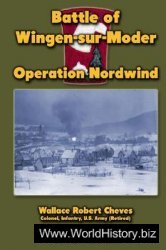Chartered on February 8, 1693, the College of William and Mary in Virginia is the second oldest institution of higher EDUCATION in British America. A college was planned as early as 1618, but the 1622 PoWHATAN uprising decimated the planned site. Reverend James Blair secured the 1693 royal charter, which endowed the school with 10,000 acres, nearly ?2,000, a steady income from TOBACCO duties, and named the college for William III and Mary II, the ruling English monarchs. The original brick main building, attributed to Sir Christopher Wren, was completed in 1699, and the college’s elegant structures inspired the colony’s gentry to construct mansions in Wren’s architectural style.
Initially, the college’s academic standards were minimal, although they improved over time. Blair departed from the traditional English curriculum, adding DANCE in 1715 and mathematics the following year. In his will physicist Robert Boyle endowed an Indian school with land and funds to support a master to teach “reading, writing, and vulgar arithmetick.” Established in 1706 as part of the College of William and Mary, the Indian school served as many as 20 NATIVE AMERICANS, but their numbers dwindled to nothing by the 1770s. In 1729 the college completed its faculty of six masters teaching moral and natural philosophy, mathematics, divinity, and grammar and enrolled around 60 students. Distinguished alumni include Thomas Jefferson, James Monroe, and Edmund Randolph.
—Michael J. Jarvis
Colleges See EDUCATION; specific colleges.
Conestoga (1690-1763)
The Conestoga were descendants of Susquehannock Indians who lived in eastern PENNSYLVANIA during the 17th century and struggled against domination by IROQUOIS Indians to the north. The Susquehannock hunted, fished, and planted corn, beans, and squash for their subsistence and competed with Delaware River tribes to monopolize intercommunity trade along the Susquehanna River. Fearful of Iroquois attack, the Susquehannock sought refuge in MARYLAND in the 1660s, but by 1675 and 1676 Virginia and Maryland colonial militias drove them back north during the crisis of BACON’S REBELLION. The Susquehannock population, which may have reached as high as 6,500, subsequently decreased due to disease and warfare, and the Iroquois and Delaware River Indian communities absorbed some survivors.
A small band also resettled at the confluence of the Susquehanna River and Conestoga Creek some time around 1690 at a town they called Quanistagua (or sometimes Caristauga). Members of Seneca, Oneida, Cayuga, and TusCARORA bands joined them, and the inhabitants eventually became known simply as the Conestoga Indians. After his first official visit to the town in 1700, William Penn signed a treaty of “Peace and Amity” with the Conestoga, promising to protect them. In 1717 Penn set aside 415 acres of land on his 16,000-acre Conestoga Manor for Indian use with the stipulation that they obey all British laws and become subjects to the king. During its heyday in the early 18th century, Conestoga was a major trade town in Pennsylvania with a highly mobile population of 100 to 150 Indians. Conestoga warriors joined the Iroquois in war against their southern enemies. Their leader, aptly named Civility, cultivated a close relationship with William Penn and his appointed colonial governor and, until their demise in 1763, Conestoga offered gifts whenever a new governor arrived in the colony. In return they expected reciprocity and often asked the governor for gifts of leather or clothing as recognition of their loyalty (a gesture that white settlers too often interpreted as “begging”).
Civility worked hard to regulate the alcohol trade at Conestoga. In 1734 he insisted that the governor limit the number of trade licenses issued and make the sale of liquor illegal. Because of their close contact with white Pennsylvanians, however, by midcentury the Conestoga had adopted many of the cultural practices of their EuroAmerican neighbors. Some became Christian. All became involved in the market economy, especially manufacturing and selling brooms and bowls to nearby white settlers. In December 1763 the Paxton Boys attacked and killed the 20 Conestoga who still lived on the manor.
Further reading: Paul A. W. Wallace, Indians in Pennsylvania, 1961 (Harrisburg: Pennsylvania Historical and Museum Commission, 1981).
—Jane T. Merritt




 World History
World History









